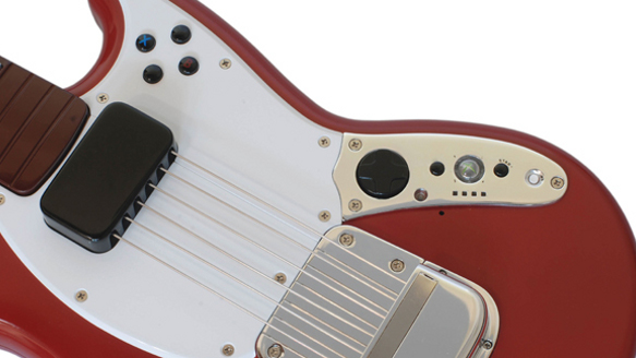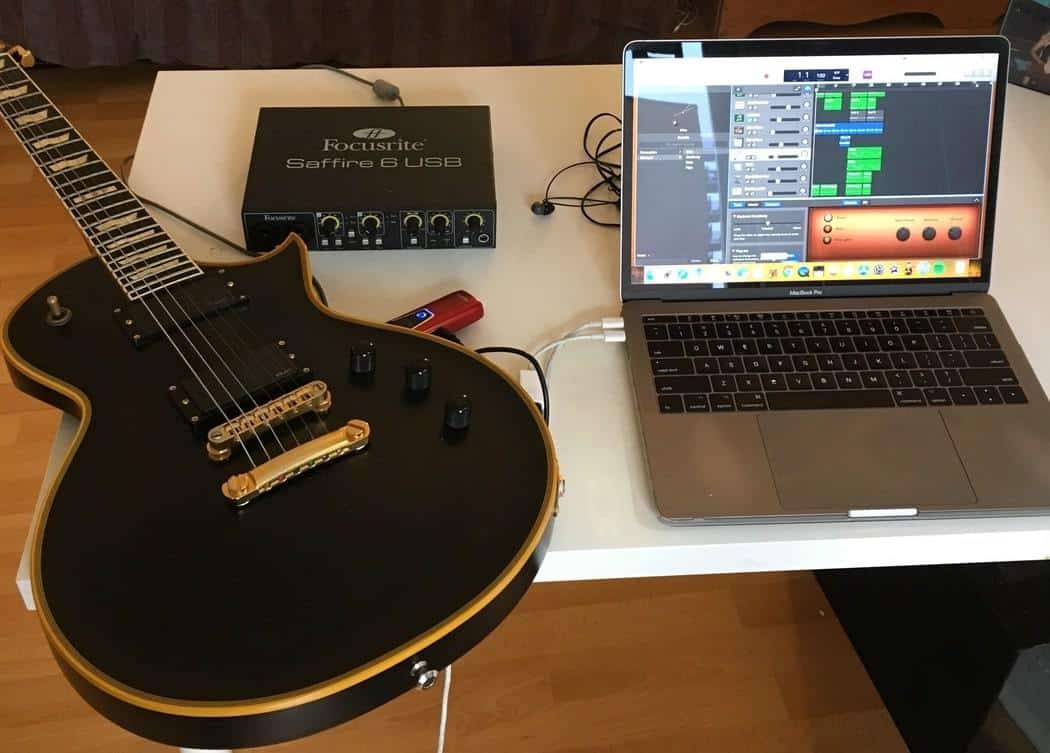

Your input should be set to your interface and your output to where you want to listen back. You can also go to Preferences, and under Audio/MIDI, you’ll find the settings for input and output.

If it says No Input, click on the toggle to the right and find your interface. It is located in the bottom left corner of the main window. Step 3: Plug the Guitar/Bass into the Audio InterfaceĪ) Using a 1/4” jack, plug into the first input, which will be in the center of the XLR input.ī) Check to see that the computer recognizes the interface by checking your input setting. The reason this option is inferior is that they don’t sound as good and they often cause latency. This is an inferior way to recording guitar but can be used if you are on a budget or if you don’t want to wait on an interface.

You would need a guitar to USB cable like this one from Amazon to hook your guitar directly in your computer. It’s possible to bypass the interface if you can’t readily afford its price or a payment plan at a large retailer. You’ll need your interface with its USB-to-Thunderbolt connecting cable first.Ī) Plug in the cable to the rear-end of the interface.ī) Find an open USB port on your computer and plug in the USB end of the connecting cable (with a USB-to-USB-C adapter if you’re using a MacBook made after 2015 – I’m using a 2017 MacBook Pro).Ĭ) Plug your instrument cable into the first input jack and switch the input to instrument.ĭ) Then turn up the gain dial but without causing clipping which is indicated with an orange (about to clip) and red light (full-on clipping). Setting up an audio interface is not very difficult, especially now that computer programs are automatic and user-friendly. Step 2: Plug the Audio Interface into the Computer It won’t cost a fortune, and not only that, but it’ll likely serve all of your needs for several years (or at least until your needs become more sophisticated). As I argued in my definitive guide to audio interfaces, this is the best way for a beginner to connect any kind of instrument with a line input into Garageband or a similar DAW. Get a Focusrite Scarlett 2i2 from Amazon if you don’t already own one. Step 1: Get an Audio Interface (If You Don’t Already Own One) If your instrument doesn’t have an input, use a microphone to tune instead. Click the tuning fork on the top right-hand side to begin tuning. To use Garageband’s tuner, connect your instrument via an audio interface like the Scarlett 2i2, and then adjust the input and output in the Preferences.
#Garageband guitar adapter how to#
How to Use Garageband’s Tuner (A Step-By-Step Guide)
#Garageband guitar adapter software#
For many of us, a physical tuner or even a software plug-in might be a better option for reasons we’ll touch on in a minute, but first, I’ll make sure you know how to use the default version. I’ve included options for those of you who would like to use something other than the built-in tuner GarageBand offers. Like every other tool in life, when it comes to getting the most accurate measurement possible, you’ll probably have to spend a bit of money. While Garageband does have a tuner, it isn’t the best. The symbol for it is a tuning fork, and when you click on it, it turns purple and the tuner deviation display will appear, however, there are third-party tuners that are better. Garageband has an in-built tuner that’s located in the control bar at the top of the Garageband window. But what about Garageband? Does it have a default tuner? You’ll probably have to either use something like Melodyne 5 from Plugin Boutique (the best editing plugin), or you’ll have to adjust the tuning of the rest of the instruments to go with the dissonant one. If you’ve tracked a song in the wrong tuning, or even worse, it’s just slightly off, this can make it a nightmare for the production process. The reason why a musician or producer needs a tuner should be obvious, but it may not be to people who aren’t familiar with the process. There’s simply no question about it it’s a must to keep a digital tuner either on your phone or a physical one in the studio at all times. Tuners are an essential tool for all musicians.


 0 kommentar(er)
0 kommentar(er)
